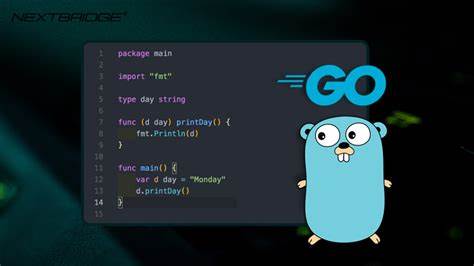
Table of Contents
Introduction:
Go Programming Language also known as Golang, is a modern programming language designed by Google. Known for its fast performance, scalability, and ability to handle concurrent programming, Go is quickly becoming a popular choice for web development. In this guide, we’ll explore the basics of the Go language, including its history, syntax, and key features. This guide is perfect for both those new to programming and experienced developers looking to expand their knowledge. We’ll cover the fundamentals of Go, helping you to understand how to write clean and efficient code using this powerful language. So, whether you’re just starting out on your programming journey or you’re an experienced developer looking to add to your skill set, this guide has something for everyone.

History of Go:
Go Programming Language, also known as Golang, is a modern programming language that was created by a team of developers at Google in 2009. The language was designed with the goal of addressing some of the common challenges faced by developers when working with other programming languages, such as the need for more efficient and scalable applications.
Go Programming Languagewas designed with simplicity, speed, and efficiency in mind. The language features a clean and concise syntax, making it easy to learn and use. It also has strong support for concurrent programming, which enables developers to build high-performance applications that can handle multiple tasks at the same time.
Go Programming Language has quickly become a popular choice for web development due to its fast performance, scalability, and ease of use. The language is designed to be fast and efficient, allowing developers to write clean and efficient code. It’s also designed to be highly scalable, making it an ideal choice for building large-scale applications.
One of the key advantages of Go is its strong support for concurrent programming. This makes it easier for developers to build applications that can handle multiple tasks at the same time, which is critical for building high-performance applications. Go also offers built-in memory management, which helps to prevent memory leaks and improves the performance of the application.
Another advantage of Go Programming Language is its easy-to-use syntax. The language is designed to be simple and straightforward, making it easier for developers to get started with web development. It’s also highly portable, which means that developers can write code once and run it on multiple platforms without having to make any changes.
Syntax and Key Features:
Go Programming Language has a clean and simple syntax that makes it easy to write and understand code. It is also statically typed, which means that variables are defined with a specific type and cannot be changed during runtime. This feature helps to prevent common programming errors and makes the code more robust.
One of the key features of Go is its ability to handle concurrent programming. This means that Go can handle multiple tasks at once, which makes it well suited for building scalable applications. Go also has built-in support for garbage collection, which automatically frees up memory that is no longer being used, making it easier to write efficient and robust applications.
Web Development with Go:
Go Programming Language is a popular choice for web development due to its efficient performance and scalability. The net/http package in Go provides a simple and flexible way to handle HTTP requests and responses, making it easy to build web applications. Additionally, there are many third-party libraries and tools available for Go, including frameworks for building web applications, API development, and more.
Concurrent Programming with Go:
Go’s support for concurrent programming is one of its key strengths. The language provides a number of tools and features for building efficient and scalable applications, including goroutines and channels. Goroutines are lightweight threads that can be used to run multiple tasks simultaneously, while channels provide a way to communicate between goroutines, making it easy to build concurrent applications.
Efficient Performance:
Go’s efficient performance is one of its key strengths. The language is designed to be fast and efficient, and it provides many features and tools that make it easier to write efficient and scalable applications. This includes its garbage collection system, its ability to handle concurrent programming, and its efficient memory management.

Conclusion:
Go Programming Language is a modern programming language that has gained popularity among web developers due to its efficiency, scalability, and support for concurrent programming. This language is designed to handle high-performance applications and is known for its quick execution and ability to handle multiple tasks simultaneously.
In this guide, we’ll explore the basics of Go programming, including its history, syntax, and key features. We’ll cover the fundamentals of the language, helping you to understand how to write clean and efficient code using Go. This guide is designed for both beginners and experienced developers who want to expand their knowledge of the language.
Go Programming Language offers many advantages for web development, including its fast performance, scalability, and easy-to-use syntax. It’s a versatile language that can be used for a wide range of applications, from simple scripts to complex web applications. Whether you’re just starting out with programming or you’re looking to add to your skill set, Go is a great language to learn.
Go Programming Language is a powerful and versatile language that is becoming increasingly popular for web development. With its efficient performance, scalability, and support for concurrent programming, it’s a popular choice for building high-performance applications. Whether you’re just starting out with programming or you’re a seasoned pro looking to add to your skill set, this guide has something for everyone.